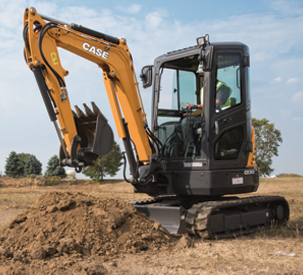How to Choose the Right Chains for Lifting and Transport
When it comes to transporting or lifting your equipment, supplies, tools, or other materials, you have to be sure you're using the right chains to secure your load. How much a chain can hold depends on the type of material it's made out of and how much stress it can endure before breaking.
We've put together this guide on the various chain grades and what applications each is suited for to help ensure you use the correct chain for your transport or lifting needs.
What are industrial chain grades?
Chain grades describe the ultimate breaking strength or tensile strength of a given type of chain. The common chain grades used today are G30, G43, G70, G80, G100, and G120. The numbers in each grade are newtons per square millimeter and one tenth of the actual mathematical grades. For example, G70 grade chains have a breaking strength of 700 N/mm2 (newtons per square millimeter).
Grade 30 – These chains are general purpose and made from low strength carbon steel. They are commonly used for load securement in the agricultural, logging, and light construction industries.
Grade 43 – Made from stronger carbon steel than grade 30 chains, grade 43 chains are used for towing, logging, securing containers, and marine applications.
Grade 70 – Grade 70 chains are about 20% stronger than grade 43 chains and made from heat treated carbon steel that provides excellent strength and durability. They are commonly used for trucking and trailer tie downs, heavy load securement, and heavy towing.
Grade 80 – Grade 80 chains are made of an alloy steel mixture that makes them extremely strong and suitable for overhead lifting. They can also be used for heavy duty towing, rigging, and tie downs.
Grade 100 – With about 25% more strength than grade 80 chains, grade 100 chains are used primarily as a sling component for extremely heavy overhead lifting. They are also used for heavy duty rigging, towing, and construction applications.
Understanding the working load limit of your chain
In addition to knowing your chain grade, you also need to understand your chain's working load limit. Working load limit is usually provided in pounds and refers to the maximum amount of tension that can be applied to an undamaged chain. The limit will vary within each chain grade, based on the diameter and shape of the chain.
When choosing the best chain for a lifting application, it's important to make sure the working load limit is sufficient to support the weight of the load plus any additional forces imposed by angles or hitch types. Usage, wear, twists, overloading, corrosion, alteration, and misuse all affect the working load limit of any chain. To ensure the chain is safe for continued use, it should be regularly inspected.
Working load limits of the different chain grades
Use this chart to help determine the right chain for your application:
| Chain Grade | Working Load Limit Range |
|---|---|
| G30 | 1,300 lb – 6,900 lb |
| G43 | 2,600 lb – 13,000 lb |
| G70 | 3,150 lb – 15,800 lb |
| G80 | 3,500 lb – 47,700 lb |
| G100 | 4,300 lb – 35,300 lb |
Contact Wilson today to determine the exact chain you need for securing or lifting heavy loads!

